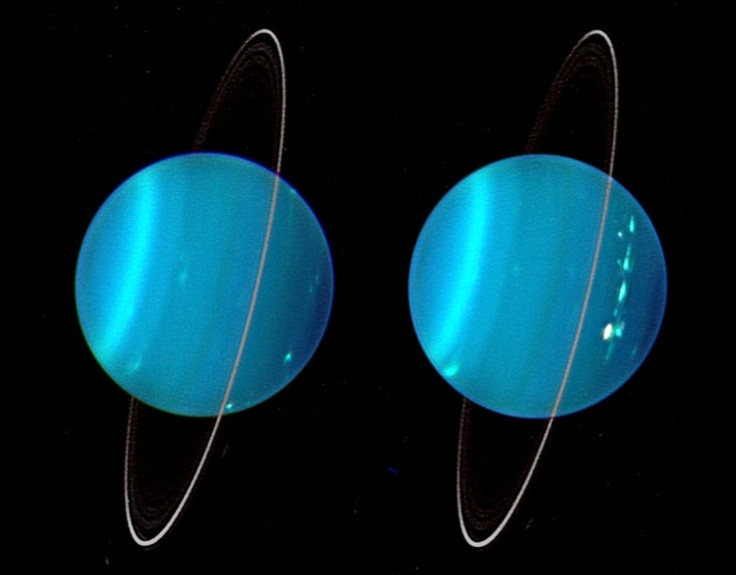Uranus: Mysterious giant space rock crashed into icy planet blowing 18 moons into its orbit
The same collision also affected the axial tilt of the ice giant, toppling it sideways.

An Earth-size rock that knocked Uranus sideways might have also led to the formation of some of its many moons, according to a new study presented at the annual meeting of the American Geophysical Union in New Orleans.
Uranus is the weirdo of our Solar System. The planet is not only dark, cold, and mysterious but is also spinning on its side. This is attributed to a very unusual 98% axial tilt – the angle at which a planet spins relative to its path of orbit around the sun.
In comparison, most other planets appear to spin while sitting upright with a pointed axis. Venus' axis is tilted by just 3% and the Earth's by 23%, according to Space.com. Because of the tilt, winters at one of Uranus' poles last up to 21 years.
Still, not much has been known about the phenomenon that led to this. Some suggest the planet tilted during the first million years of its evolution, while others have attributed it to a violent collision that might have occurred when the planet was young.
Now, building on that theory, a group of Japanese researchers have suggested that a similar rough encounter, possibly with an object as big as our own Earth, also led to the formation of many of Uranus' moons.
In total, Uranus has 27 known moons. Nine of these have unusual orbits and are believed to have been captured by the gravitational pull of the ice giant, while the other 18 "regulars" are orderly siblings whose formation has not been explained yet. Researchers think these moons might have formed from the debris left over from the huge collision.
"Material from the two bodies is ejected in a debris disk, and finally satellites are formed from the debris disk," one of the researchers, Yuya Ishizawa, told Space.com. "It is possible to explain the axial tilt and the formation of the regular satellites of Uranus simultaneously."
The researchers even ran a computer simulation to see how such an impact would have worked out for the young planet. Their findings revealed that collision of the early planet with an object as big as Earth would have been enough to knock the planet on its side and blow enough debris into its orbit to form satellites similar to those we see orbiting around Uranus.
The team's initial models also revealed the presence of moons located much closer to the planet than the ones we see today. It is unclear how these satellites would have formed and disappeared, but the group plans to conduct further studies to gain more insight into it.





